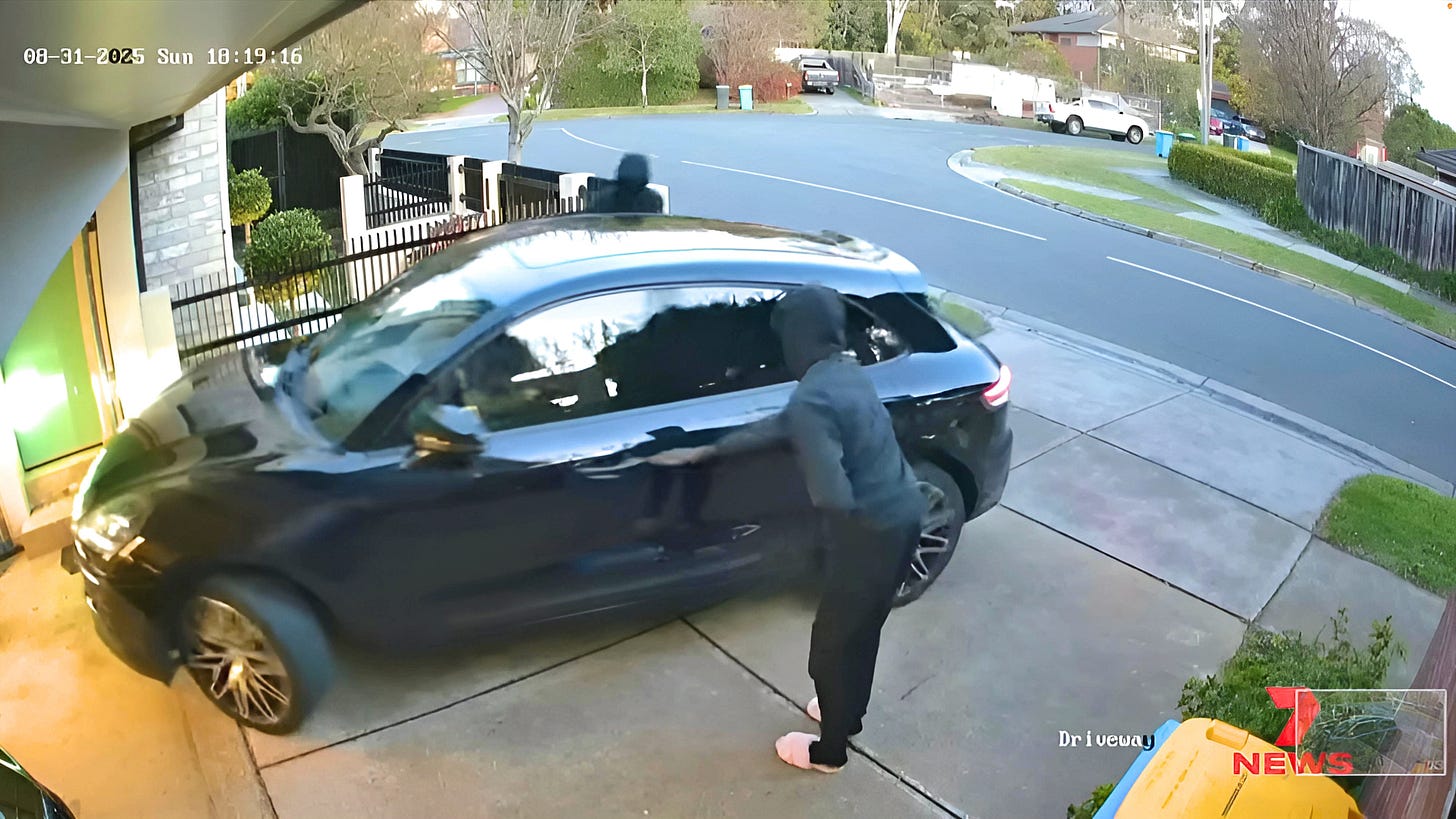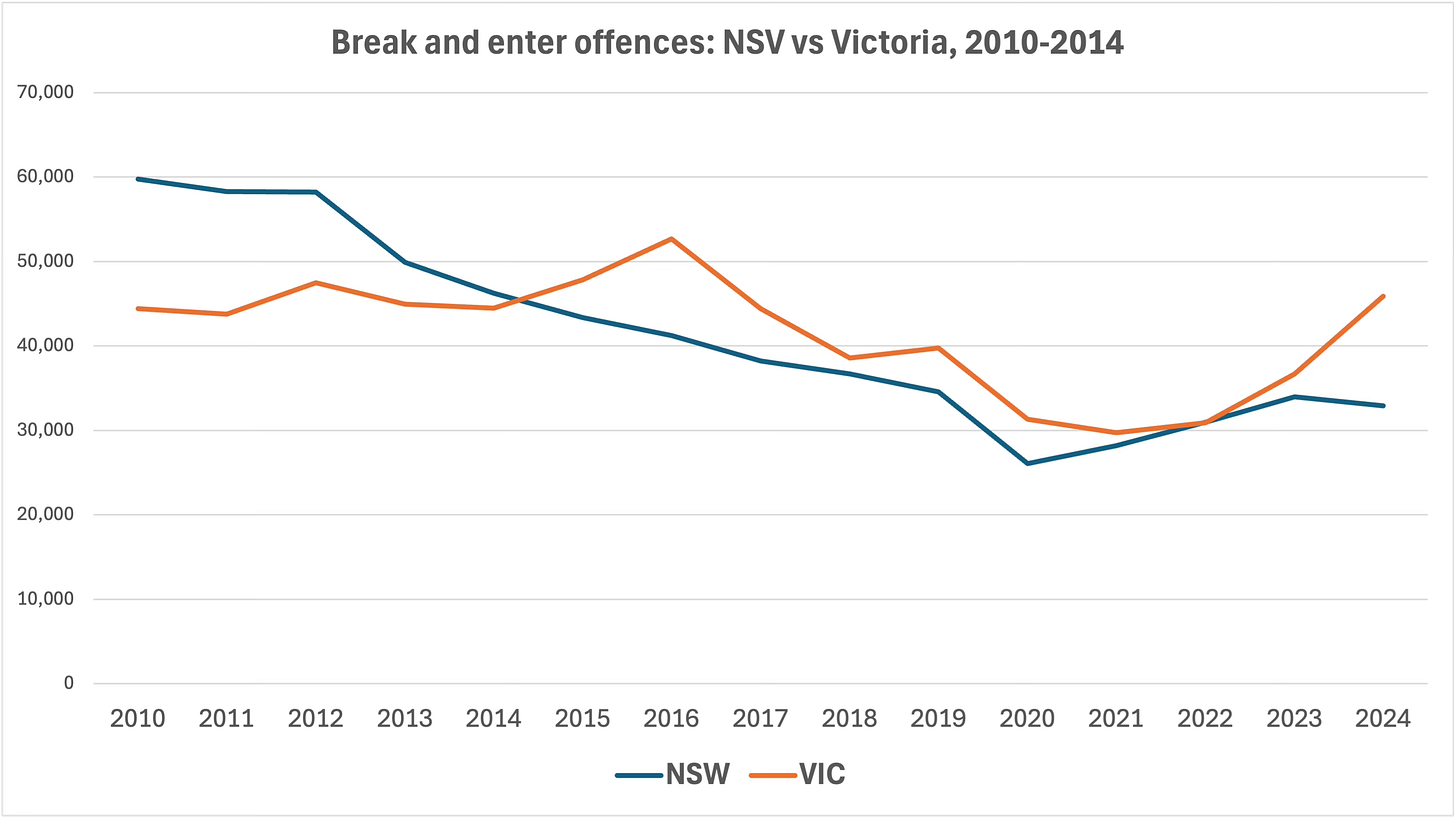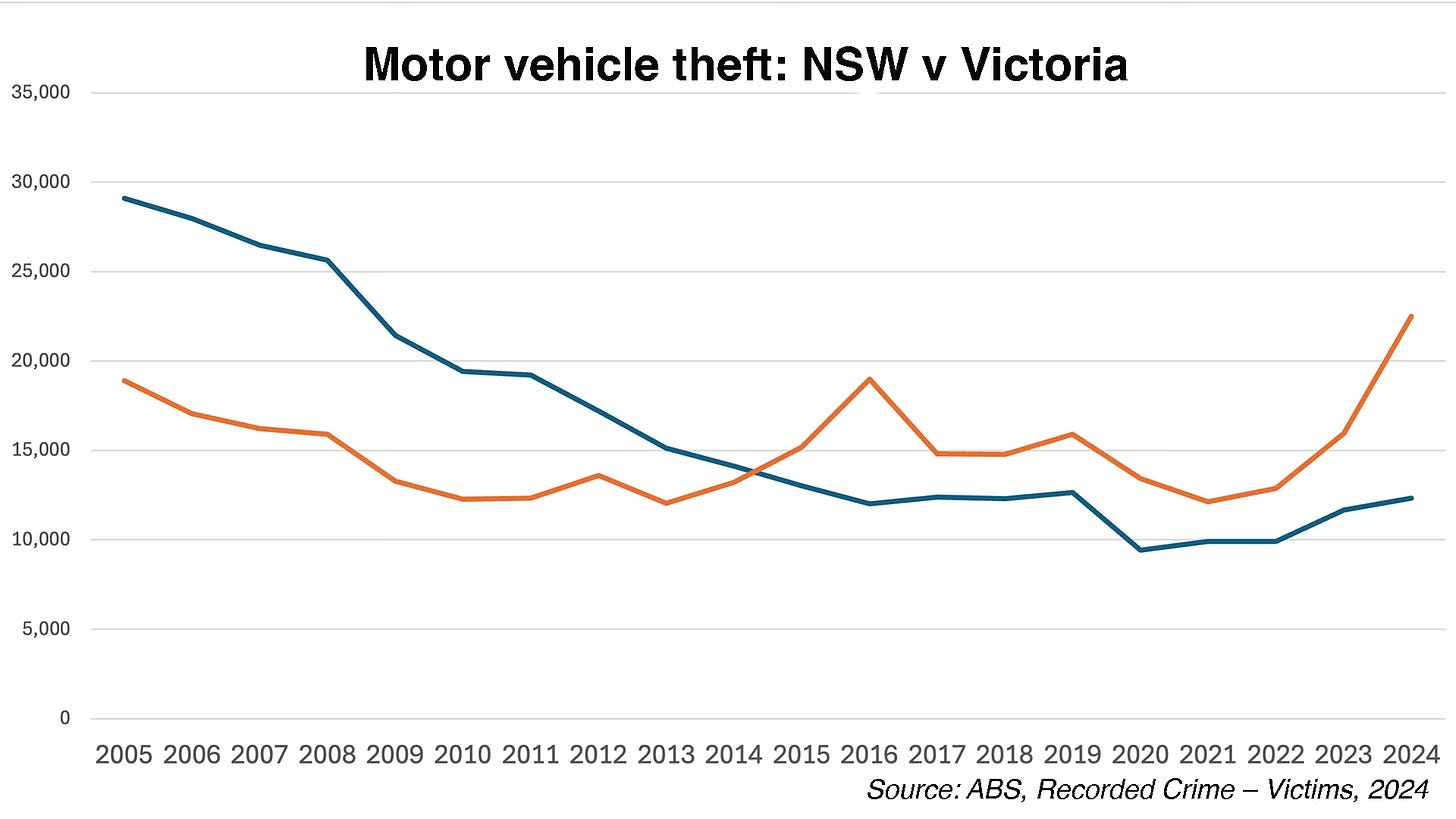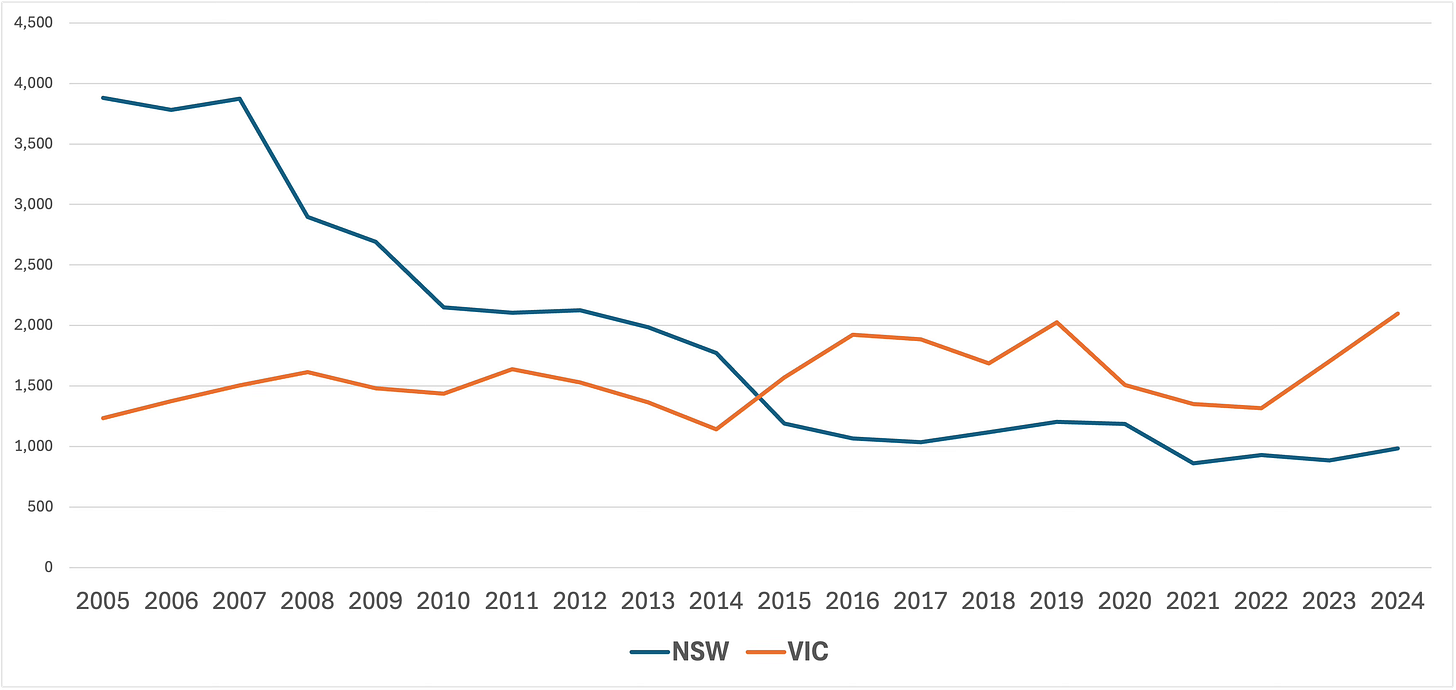State of delinquency
Victoria has the emptiest prisons in Australia. Could that be why crime is soaring?
In 2010, Victorians were 20 per cent less likely to be the victim of a burglary than their NSW counterparts. Today, burglaries are more than twice as common in Victoria as in NSW, according to ABS statistics.
The burglary rate in NSW has fallen from 272 victims per 100,000 residents in 2010 to 145 in 2023-24. In Victoria, however, the chances of being broken into today are 44 per cent higher than they were 15 years ago: 324 per 100,000 compared to 225.
This is not an outlier. In 2010, NSW drivers were 20 per cent more likely to have their cars stolen than motorists in Victoria. Since then, the car theft rate in NSW has halved, while in Victoria it has risen by 40 per cent.
A decade and a half ago, Victoria was the second least likely state or territory in which to have your car stolen. Now it’s the second most likely after the NT.
It is a similar picture to the rate of armed robbery. In 2010, the chances of becoming a victim of an armed robbery in NSW were approximately 1 in 3,000, slightly higher than in Victoria. In 2024, the odds in Victoria had tightened to 1 in 3000, while in NSW they’d dropped to 1 in 10,000.
We’ve been told for decades that the underlying reasons for crime are complicated. Like Officer Krupke in Stephen Sondheim’s lyrics for the 1957 musical West Side Story, we’re urged to abandon thoughts of delinquency and recognise that crime is a social disease.
Those muddled thoughts have been further confused by identity politics, victim culture and the theory of intersectionality. Woke thinking induces severe cognitive dissonance: since people of colour, Islamists and LGBTIQ+ folk are victims, they should not be sitting in the dock, let alone in prison.
What if we push back against the claim that crime is complicated, and recognise that it is surprisingly simple? The decision to commit a crime, after all, is a rational economic act, as Thomas Sowell explains in his book Advanced Economics.
A criminal act is preceded by a rough cost-benefit analysis by the criminal: the chances of being shot by a homeowner mean the burglary rate is considerably lower in the US than in Australia or Britain. The likelihood of being caught and sent to prison also acts as a strong deterrent, as the data consistently shows.
Incarceration offers a second benefit to law-abiding citizens in reducing the number of criminals at large. The active criminal class in most societies is relatively small, so we don’t have to incarcerate a large number of them to put a statistical dent in the crime rate. Obviously, the more criminals are jailed and the longer they stay there, the cheaper our insurance premiums will be, and life will become more pleasant in general.
Which brings us back to Victoria, the woke Utopia in the making, that briefly became known as the Lockdown State during the pandemic. It was a historical aberration, as the Victorian political and judicial classes exhibit a strong aversion to locking up anybody if they could help it.
Keep reading with a 7-day free trial
Subscribe to Reality Bites By Nick Cater to keep reading this post and get 7 days of free access to the full post archives.





